The Effect of Matrix Composition on the Deformation and Failure Mechanisms in Metal Matrix Syntactic Foams during Compression
Abstract
:1. Introduction
2. Materials and Methods
2.1. Materials
2.2. Methods
3. Results and Discussion
3.1. ASK Method
ASK Evaluation on Syntactic Foams
3.2. DIC Analysis on Syntactic Foams
4. Conclusions
Supplementary Materials
Acknowledgments
Author Contributions
Conflicts of Interest
References
- Proceedings of the 8th International Conference on Porous Metals and Metallic Alloys. In Procedia Materials Science; Rabiei, A. (Ed.) Elsevier: Amsterdam, The Netherlands, 2014; Volume 4, pp. 1–400.
- Ashby, M.F.; Evans, A.G.; Fleck, N.A.; Gibson, L.J.; Hutchinson, J.W.; Wadley, H.N.G. Metal Foams: A Design Guide; Butterworth-Heinemann: Oxford, UK, 2000. [Google Scholar]
- Goodall, R.; Mortensen, A. Porous metals. In Physical Metallurgy, 5th ed.; Laughlin, D., Hono, K., Eds.; Elsevier: Amsterdam, The Netherlands, 2014; p. 2399. [Google Scholar]
- Zhang, C.J.; Yi, F.; Zhang, X.B. Mechanical properties and energy absorption properties of aluminum foam-filled square tubes. Trans. Nonferrous Met. Soc. China 2010, 20, 1380–1386. [Google Scholar] [CrossRef]
- Altenaiji, M.; Guan, Z.W.; Cantwell, W.J.; Zhao, Y.; Schleyer, G.K. Characterisation of aluminium matrix syntactic foams under drop weight impact. Mater. Des. 2014, 59, 296–302. [Google Scholar] [CrossRef]
- Wright, A.; Kennedy, A. The processing and properties of syntactic Al foams containing low cost expanded glass particles: Processing and properties of syntactic Al foams. Adv. Eng. Mater. 2016. [Google Scholar] [CrossRef]
- Santa Maria, J.A.; Schultz, B.F.; Rohatgi, P.K. Al-Al2O3 Syntactic foams—Part I: Effect of matrix strength and hollow sphere size on the quasi-static properties of Al-A206/Al2O3 syntactic foams. Mat. Sci. Eng. A 2013, 582, 415–422. [Google Scholar] [CrossRef]
- Tao, X.F.; Zhao, Y.Y. Compressive failure of Al alloy matrix syntactic foams manufactured by melt infiltration. Mater. Sci. Eng. A 2012, 549, 228–232. [Google Scholar] [CrossRef]
- Balch, D.K.; O’Dwyer, J.G.; Davis, G.R.; Cady, C.M.; Gray, G.Z., III; Dunand, D.C. Plasticity and damage in aluminum syntactic foams deformed under dynamic and quasi-static conditions. Mater. Sci. Eng. A 2005, 391, 408–417. [Google Scholar] [CrossRef]
- Luong, D.D.; Strbik, O.M., III; Hammond, V.H.; Gupta, N.; Cho, K. Development of high performance lightweight aluminum alloy/SiC hollow sphere syntactic foams and compressive characterization at quasi-static and high strain rates. J. Alloys Compd. 2013, 550, 412–422. [Google Scholar] [CrossRef]
- Orbulov, I.N.; Ginsztler, J. Compressive behaviour of metal matrix syntactic foams. Acta Polytech. Hung. 2012, 9, 43–56. [Google Scholar]
- Gupta, N.; Woldesenbet, E.; Sankaran, S. Studies on compressive failure features in syntactic foam material. J. Mater. Sci. 2001, 36, 4485–4491. [Google Scholar] [CrossRef]
- Gupta, N.; Woldesenbet, E.; Mensah, P. Compression properties of syntactic foams: Effect of cenosphere radius ratio and specimen aspect ratio. Compos. Part A 2004, 35, 103–111. [Google Scholar] [CrossRef]
- Bart-Smith, H.; Bastawros, A.F.; Mumm, D.R.; Evans, A.G.; Sypeck, D.J.; Wadley, H.N.G. Compressive deformation and yielding mechanisms in cellular Al alloys determined using X-ray tomography and surface strain mapping. Acta Mater. 1998, 46, 3583–3592. [Google Scholar] [CrossRef]
- Taherishargh, M.; Belova, I.V.; Murch, G.E.; Fiedler, T. On the mechanical properties of heat-treated expanded perlite-aluminium syntactic foam. Mater. Des. 2014, 63, 375–383. [Google Scholar] [CrossRef]
- Pomponi, E.; Vinogradov, A. A real-time approach to acoustic emission clustering. Mech. Syst. Signal Process. 2013, 40, 791–804. [Google Scholar] [CrossRef]
- Orbulov, I.N.; Dobránszky, J. Producing metal matrix syntactic foams by pressure infiltration. Periodica Polytech. Hung. 2008, 52, 35–42. [Google Scholar] [CrossRef]
- Orbulov, I.N. Szintaktikus Fémhabok. Ph.D. Thesis, Budapest University of Technology and Economics, Műegyetem, Hungary, 2009. [Google Scholar]
- Blaber, J.; Adair, B.; Antoniou, A. Ncorr: Open-source 2D digital image correlation Matlab software. Exp. Mech. 2015, 55, 1105–1122. [Google Scholar] [CrossRef]
- Kádár, C.; Máthis, K.; Orbulov, I.N.; Chmelík, F. Monitoring the failure mechanisms in metal matrix syntactic foams during compression by acoustic emission. Mater. Lett. 2016, 173, 31–34. [Google Scholar] [CrossRef]
- Heiple, C.R.; Carpenter, S.H. Acoustic emission produced by deformation of metals and alloys: A review. J. Acoust. Emiss. 1987, 6, 177–204. [Google Scholar]
- Compression of Al-based MMS foam. Available online: http://metal.elte.hu/~kadar/Al_Globocer_compression_8x.mpeg (accessed on 15 February 2017).
- Kiser, M.; He, M.Y.; Zok, F.W. The mechanical response of ceramic microballoon reinforced aluminum matrix composites under compressive loading. Acta Mater. 1999, 47, 2685–2694. [Google Scholar] [CrossRef]
- Zhang, L.P.; Zhao, Y.Y. Mechanical Response of Al Matrix Syntactic Foams Produced by Pressure Infiltration Casting. J. Compos. Mater. 2007, 41, 2105–2117. [Google Scholar] [CrossRef]
- Rocha Rivero, G.A.; Schultz, B.F.; Ferguson, J.B.; Gupta, N.; Rohatgi, P.K. Compressive properties of Al-A206/SiC and Mg-AZ91/SiC syntactic foams. J. Mater. Res. 2013, 28, 2426–2435. [Google Scholar] [CrossRef]
- Guiglionda, G.; Poole, W.J. The role of damage on the deformation and fracture of Al–Si eutectic alloys. Mat. Sci. Eng. A 2002, 1, 159–169. [Google Scholar] [CrossRef]
- Compression of AlSi12-based MMS Foam. Available online: http://metal.elte.hu/~kadar/AlSi12_Globocer_compression_8x.mpeg (accessed on 15 February 2017).
- Compression of AlSi12-based MMS Foam—DIC Analysis. Available online: http://metal.elte.hu/~kadar/DIC_AlSi12_Globocer_compression.gif (accessed on 15 February 2017).
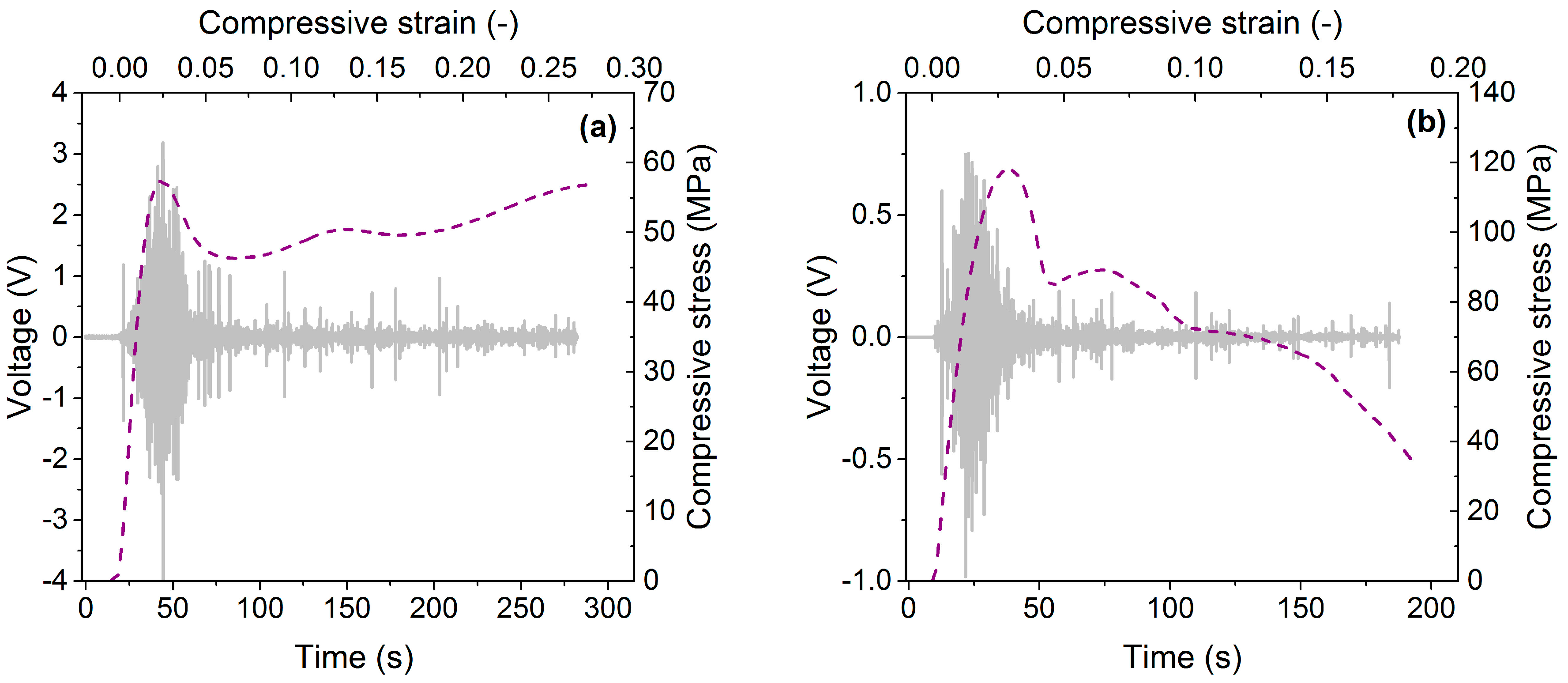
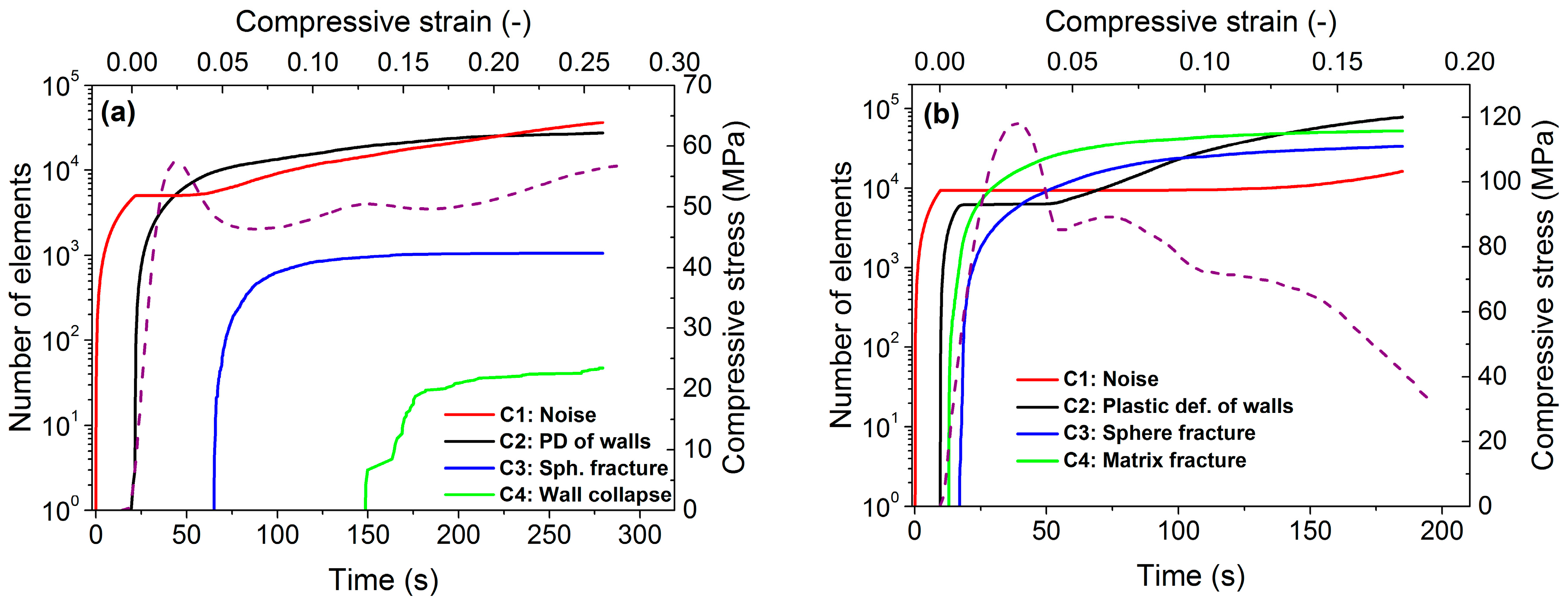

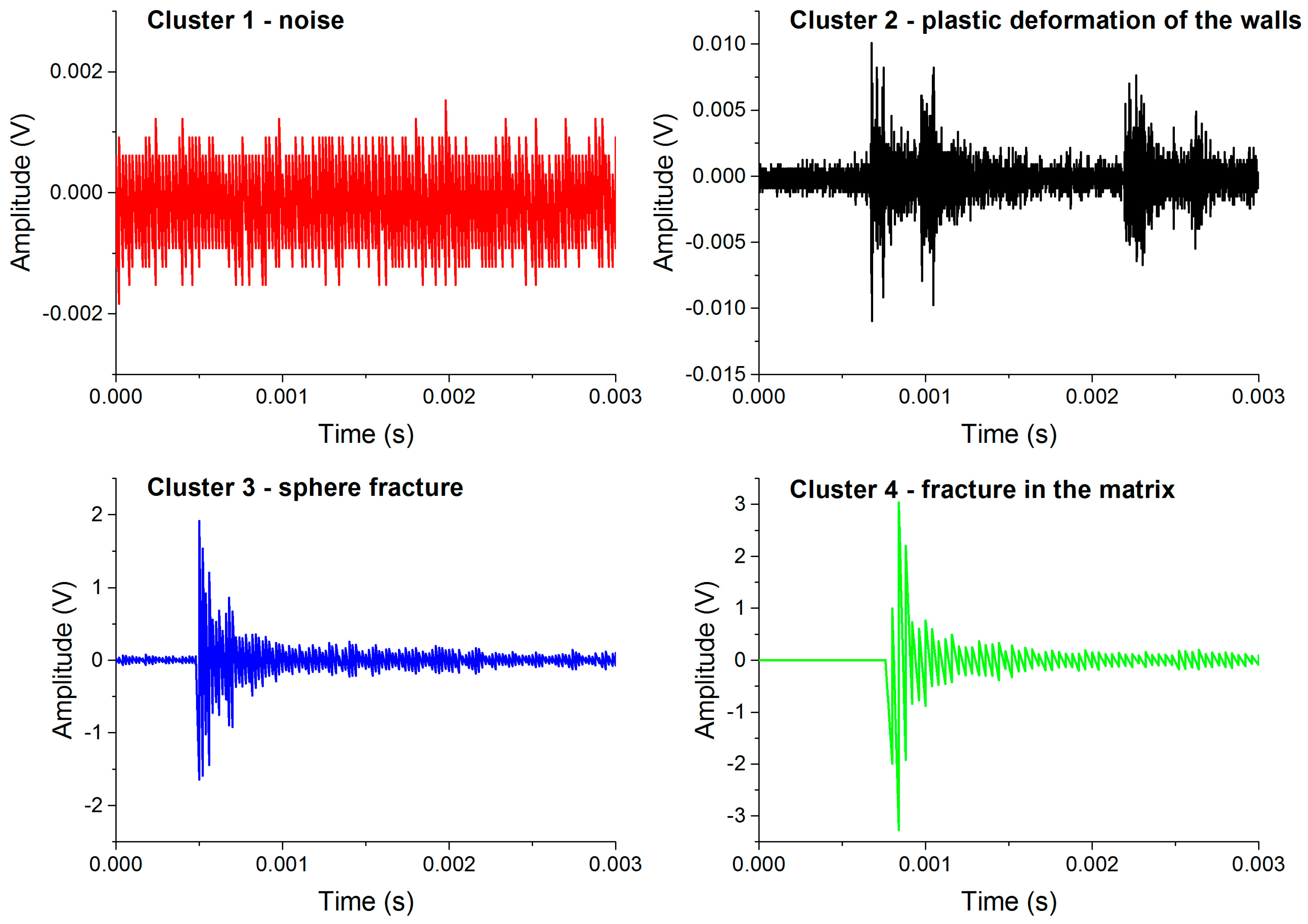
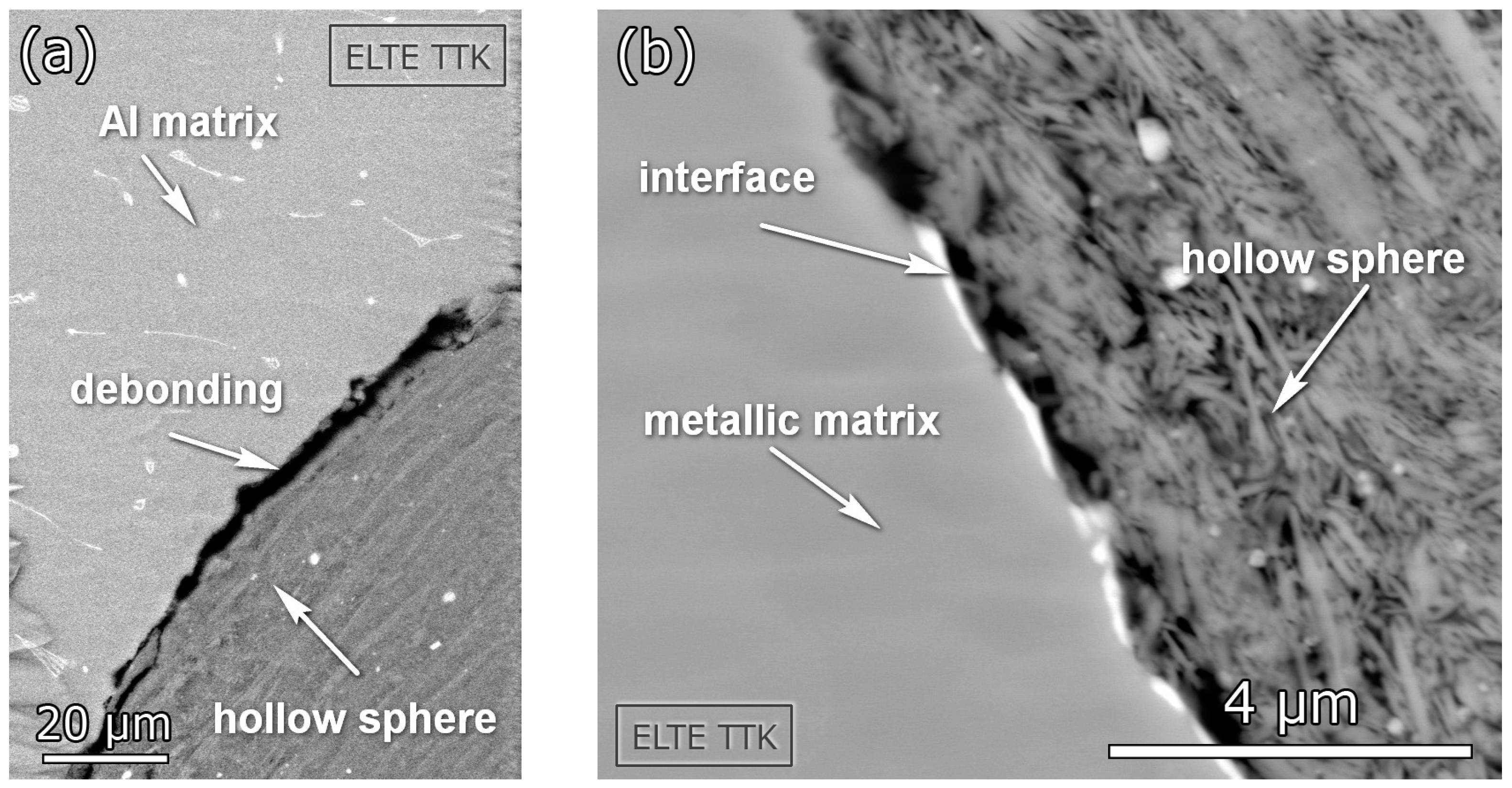
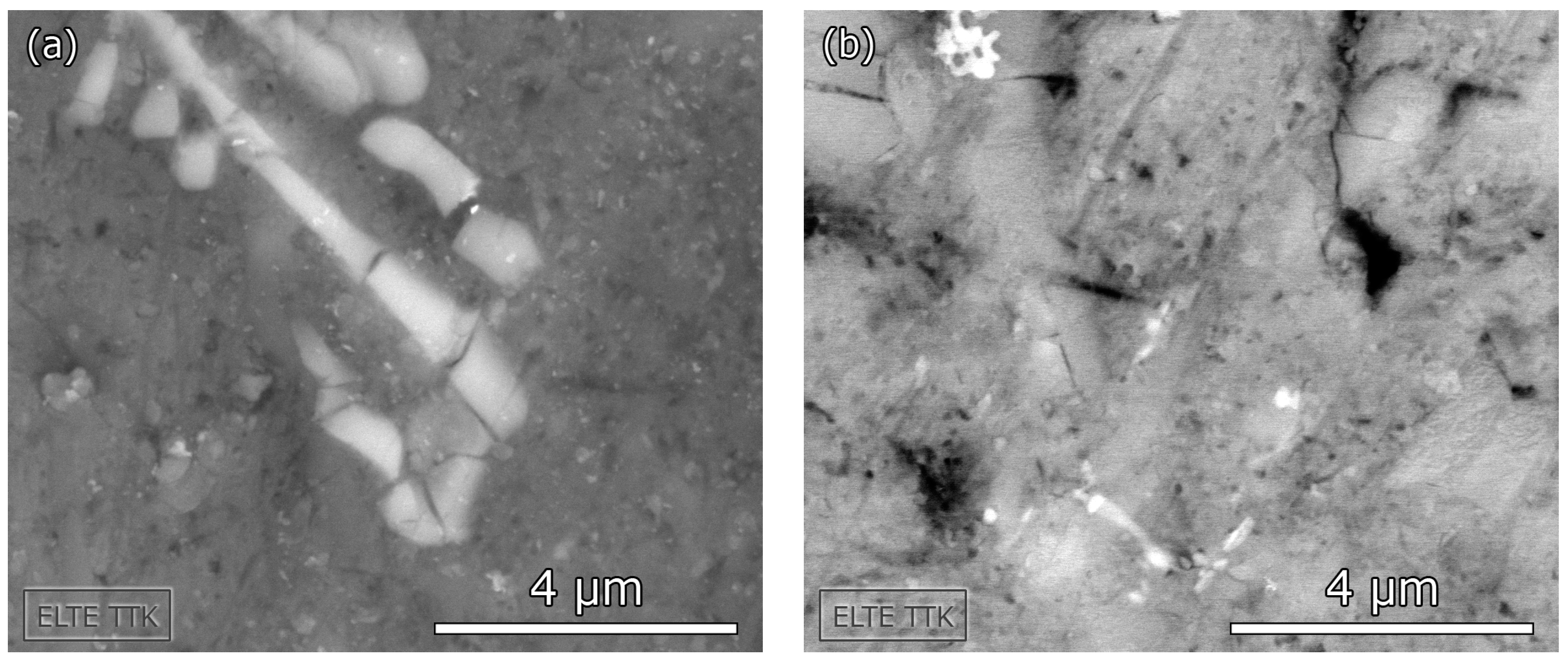
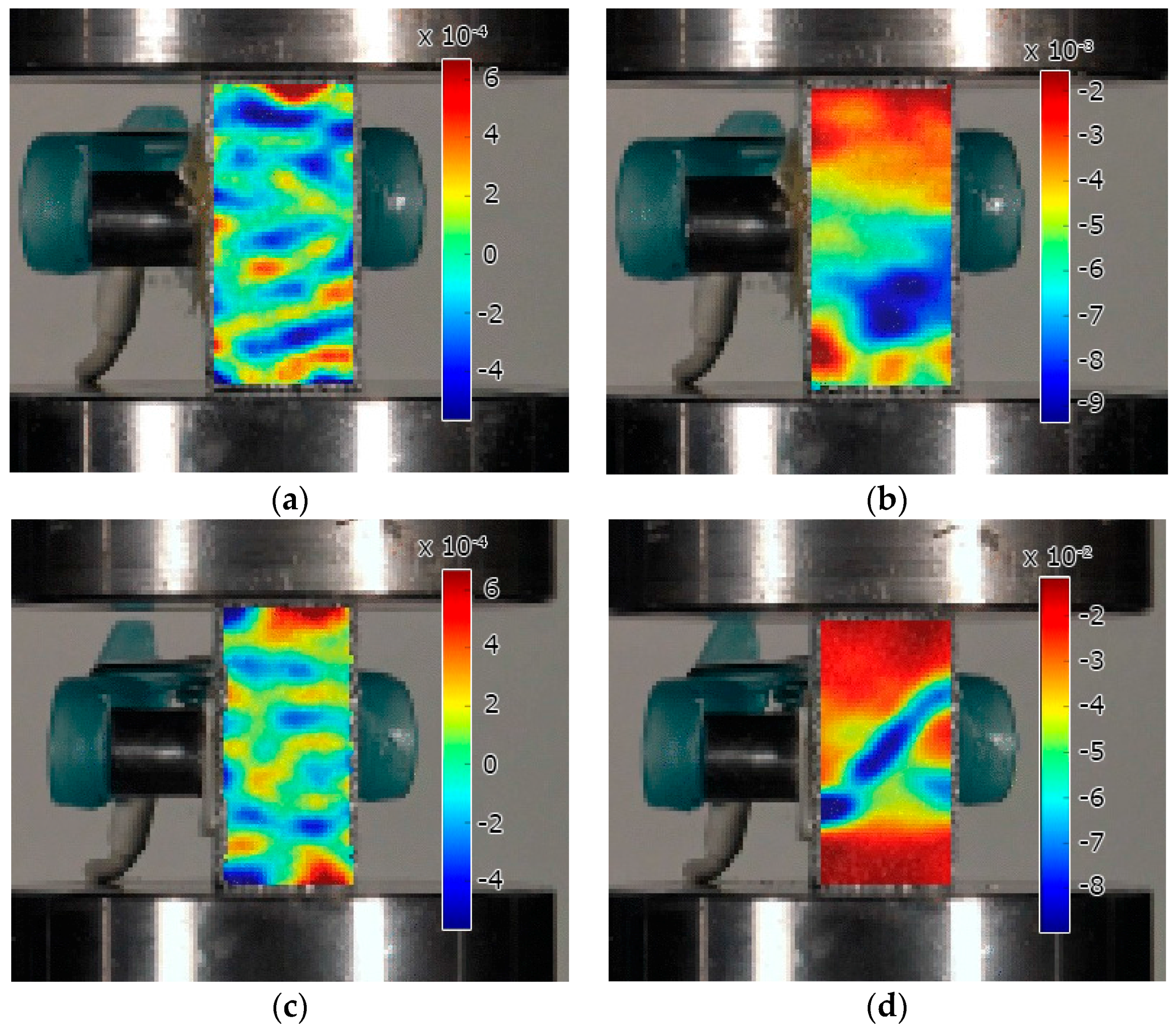
© 2017 by the authors. Licensee MDPI, Basel, Switzerland. This article is an open access article distributed under the terms and conditions of the Creative Commons Attribution (CC BY) license ( http://creativecommons.org/licenses/by/4.0/).
Share and Cite
Kádár, C.; Máthis, K.; Knapek, M.; Chmelík, F. The Effect of Matrix Composition on the Deformation and Failure Mechanisms in Metal Matrix Syntactic Foams during Compression. Materials 2017, 10, 196. https://doi.org/10.3390/ma10020196
Kádár C, Máthis K, Knapek M, Chmelík F. The Effect of Matrix Composition on the Deformation and Failure Mechanisms in Metal Matrix Syntactic Foams during Compression. Materials. 2017; 10(2):196. https://doi.org/10.3390/ma10020196
Chicago/Turabian StyleKádár, Csilla, Kristián Máthis, Michal Knapek, and František Chmelík. 2017. "The Effect of Matrix Composition on the Deformation and Failure Mechanisms in Metal Matrix Syntactic Foams during Compression" Materials 10, no. 2: 196. https://doi.org/10.3390/ma10020196
APA StyleKádár, C., Máthis, K., Knapek, M., & Chmelík, F. (2017). The Effect of Matrix Composition on the Deformation and Failure Mechanisms in Metal Matrix Syntactic Foams during Compression. Materials, 10(2), 196. https://doi.org/10.3390/ma10020196







